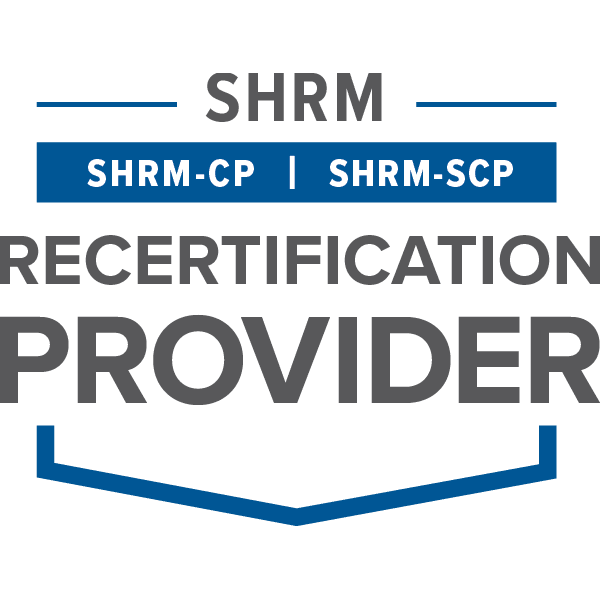On-Demand Training Course
Learn important de-escalation skills that can help you deal with stressful situations or a crisis in the workplace. PLA’s online training course includes:
- A basic sequence for de-escalating customers
- Effective tools for emotional self-management
- The basics of escalated customer conflict
- How to attend to customers’ psychological needs
- Learning Assessments & Certificate of Completion
Course Description
Our asynchronous Customer Service De-escalation Training Workshop utilizes our industry-leading methods, which have been successfully taught and applied to participants in more than 60 industries around North America, from small retail shops to Fortune 100 companies.
Course Curriculum
- Overview of basic escalated conflict theory, psychology, and neurobiology
- Practical self-regulation and emotional self-management techniques
- Learn to put customer care before position or policy enforcement without eliminating policies
- Learn to utilize basic conflict psychology in de-escalating customer conflicts
- Reflective listening techniques
- How and when to implement reassurance during de-escalation
- How and when to use an apology effectively
- Using policy or rules explanation effectively
- Learning to open a space for collaboration with customers

Dr. Jeremy Pollack
Course Instructor
Dr. Jeremy Pollack is a leader in the field of workplace conflict resolution and peacebuilding. He is the Founder of Pollack Peacebuilding Systems, an international conflict resolution consulting firm. Dr. Pollack coaches and trains executives and employees at a variety of levels and industries, from Fortune 500 companies to major non-profits. He has a Ph.D. in Psychology and an M.A. in Negotiation, Conflict Resolution, and Peacebuilding. Read more about Dr. Pollack HERE.
Customer service representatives make up a substantial portion of the workforce, both in the United States and abroad. Companies of all shapes and sizes can benefit from using high-quality customer service agents to field complaints and assist clients.
However, because angry customers often don’t differentiate between workers and the company they represent, conflicts can occur regularly. For this reason, it makes sense to invest in de-escalation training for the customer service team.
But, what does this training involve and is it worth the time and money? The short answer is yes, but Peaceful Leaders Academy can help with targeted training to handle the most common aspects of a customer service job.
What is De-Escalation Training for Customer Service Workers?
Regardless of the size of the company, customer complaints will come with the territory. Typically, when a customer has an issue, they’ll talk with a customer support agent. Ideally, this agent has the power to rectify the problem, but not always.
In some cases, the agent may only be able to listen to the angry customer and direct them to a supervisor. However, in the moment, this kind of deflection can lead to more anger and frustration. When this happens, a conflict can erupt suddenly.
When customer support agents learn the proper de-escalation techniques, they can handle these situations with ease. Otherwise, untrained individuals may affect customer retention and cause the company to lose profits. When a dissatisfied customer feels ignored, they’re far more likely to go to a competitor.
So, de-escalation training involves learning how to communicate with irate customers to resolve issues and provide excellent support. This process involves a lot more than just listening to the customer’s complaint – it also needs to include problem-solving.
At Peaceful Leaders Academy, we focus on conflict prevention and resolution. Effective de-escalation techniques like active listening and applied empathy can lead to better customer retention and happier clientele.
What’s Included in De-Escalation Training?
Before having customer service agents learn effective de-escalation techniques, it’s imperative to understand the basics of this training. This way, you know what to expect and how our training can be customized to fit your needs. Here are the basic tenets we follow:
Verbal De-Escalation Training
Usually, a challenging customer interaction will happen over the phone. In this case, a support representative fields calls from angry customers about a wide variety of issues. Sometimes, the problem may be with a product or service. In other cases, the complaint could be referring to a negative interaction with an employee or manager.
Verbal de-escalation training involves speaking to the customer with clear, positive language so the customer can calm down. The goal is to avoid confrontations and arguments and instead focus on the problem at hand.
One of the most valuable parts of this training is learning how to handle irate customers who may be yelling or speaking profanities. It’s imperative for support agents to avoid reacting so that they can maintain respectful troubleshooting conversations.
Positive Communication
Sometimes, the choices of words we use and how we use them can make a huge difference. For example, when discussing de-escalation techniques, representatives can focus on thanking the customer and offering praise. This type of communication can help de-escalate a situation by building the customer up and avoiding blame.
So, instead of “I’m so sorry that happened,” a customer support agent could remark, “Thank you for bringing that to my attention – let’s see what we can do about that.”
Active, engaging, and positive language can help the customer feel heard and respected. When that happens, they’re more likely to calm down and de-escalate the situation themselves. From there, it’s much easier to address different customer concerns quickly and effectively.
Problem-Solving
Almost all challenging interactions in the customer service field involve a problem that needs to be solved. Maybe a product isn’t working as it should, or perhaps an employee acted improperly. No matter the situation, customer service professionals can de-escalate things by focusing on problem-solving.
Although representatives may not be able to handle all customer requests, they should be empowered to take decisive action. In some cases, the action may be to issue refunds or replacements. In other instances, the action might simply be to direct the customer to a supervisor or manager.
Overall, de-escalation techniques for the customer service field almost always focus on fixing problems, not arguing.
Why Invest in De-Escalation Training For Customer Service Representatives?
Upset customers are always a reality for businesses. No matter what you sell or how you sell it, you’ll eventually wind up with dissatisfied customers. Fortunately, investing in de-escalation techniques and training can yield some pretty impressive benefits, such as:
Improved Customer Satisfaction
When a customer service representative can de-escalate an argument or verbal altercation effectively, the customer will take notice. By providing comprehensive understanding and care to the situation, clients feel like their needs are being met.
Overall, de-escalation training can lead to better customer satisfaction even when someone is complaining. In many cases, the issue that led to the complaint is not as important as the company’s response. If the business takes swift and decisive action, the customer is more likely to continue their patronage.
Fewer Customer Complaints
Ideally, de-escalation training is not just reactive – it’s proactive as well. By this, we mean that representatives can anticipate customer needs and address them before an argument or complaint occurs.
In this case, the training isn’t technically focused on “de-escalation” as much as it is on conflict prevention. However, by taking a holistic approach to the process, support agents can de-escalate before anything happens, leading to fewer complaints, both over the phone and online.
Not only can fewer complaints help streamline the company’s operating expenses, but they can boost the brand’s reputation. When new customers see so few complaints (or issues that were quickly addressed), they’re more likely to pay attention and buy from the business.
Stronger Bottom Line
Overall, investing in de-escalation training means you see the value of your customers and your employees. When you take a customer-first approach, you’re bound to see the results in a stronger bottom line.
Adept customer service representatives can help clients more thoroughly and solve their problems before they occur. This proactive mentality leads to better satisfaction, which translates into higher sales and better customer retention.
Positive word of mouth is a powerful marketing tool for businesses of all sizes, and de-escalation training can yield some of the best secondhand advertising. When you take care of your customers, they’ll take care of you.
De-Escalation Tips for Customer Service Agents
If you’re a customer service agent, the de-escalation process doesn’t have to be long and complicated. Instead, remembering a few critical details can make all the difference.
Here are some essential de-escalation techniques for customer service reps to follow:
Show Empathy
When a customer begins to scream and shout about a problem, it’s easy to dismiss their behavior as erratic. However, as a support rep, you need to learn how to see things from different perspectives. So, part of de-escalation training is practicing empathy and how to show it to the customer.
For example, you can start by recognizing their problem and show that you understand their frustration. If a product isn’t working, it can create massive headaches, especially if the customer needs it to perform a specific task.
Overall, it’s best to see through the anger and focus on the person behind the complaint. How would you feel if you were in that situation? What would it take for you to yell at a customer service agent? Starting from that mindset can help you address the customer’s concerns more proactively.
Remain Calm
One of the best de-escalation techniques for customer service reps is learning how to stay calm in high-stress situations. Even if a customer is berating you over the phone or in person, it’s imperative to resist the urge to respond in kind.
While it’s not okay for customers to disrespect you for doing your job, you have to remember that you’re a representative of the company. So, your actions are a reflection of the brand, not just you. That said, how you respond to aggression can also say a lot about your candor and demeanor, so it’s good to remain calm whenever possible.
Finally, maintaining your composure allows you to think clearly and critically about the situation. If a customer needs help with something, it’s up to you to figure out how to assist them or direct them to the proper channel.
Avoid Assumptions
It’s easy to assume different variables about a customer, particularly when they’re complaining to you directly. However, part of the de-escalation process is understanding where the other person is coming from. You can’t do that when you’re in a place of judgment, and it’s much harder to fix the problem when you make assumptions.
Instead, make sure to ask questions so you can understand the context of the situation as much as possible. This way, you can navigate the right path toward a solution without alienating or upsetting the customer even more.
Work on a Solution Together
Sometimes, the best way to handle upset customers is to give them a refund, a discount, or a replacement item. In other instances, the grievance requires more effort and potentially someone above your pay grade.
Overall, de-escalation training focuses on finding solutions, not assigning blame or pointing fingers. You can start by asking the customer what result they want and how you can resolve the issue. Then, if you’re capable of handling it yourself, you can take care of the problem and send them on their way. If you can’t handle the issue yourself, you can either direct the customer to a manager or loop them in to figure out a resolution.
Avoid Over-Promising
Typically, de-escalation training is a bit of a balancing act. On the one hand, you want to resolve a problem as quickly as possible and make the customer happy (or at least satisfied) with the results.
On the other hand, if you make promises that you can’t keep (or the company won’t keep), you risk making the problem worse. For this reason, it’s imperative to know what you can and can’t do in any given situation. For example, if you offer a refund for an item, make sure you have the authority to return that money. Otherwise, you’re the one on the line for it, not the customer.
How Companies Can Invest in De-Escalation Techniques
De-escalation is more than just a multi-stage training session with customer service agents. Companies can invest in different methods and programs to facilitate better service for customers and reps alike.
Here are some ways that businesses can make de-escalation a priority:
Automate Customer Support Tasks
Fortunately, we’re living in the age of technology, so it’s never been easier to automate different processes. For example, chatbots can answer simple questions and direct customers to the right department.
Automating these initial tasks ensures that support reps have as much knowledge and understanding about the situation before speaking to the customer. This way, the rep can come into the conversation prepared instead of playing catch-up, which could make the customer angrier or more frustrated.
Empower the Customer Service Team
When reps have the power to handle basic issues, everyone wins. Customers win because they don’t have to wait forever or get bounced around to different departments and supervisors. Reps win because they feel more satisfied with their work, and they’re more likely to make the customer happier making their job easier.
Finally, the company wins because customers know they can rely on the business to handle their problems quickly and efficiently. When compared to other brands that give clients the runaround, a streamlined process is a big selling point.
Have a Training Manual Handy
One of the best ways to facilitate long-term de-escalation training is to provide materials for service reps to reference on their own. This way, they don’t have to consult supervisors or managers with every single problem.
Training manuals can also help protect the company by outlining specifically what a rep can and can’t do. This way, if there is an issue, there’s a clear paper trail to figure out what went wrong and how to fix it.
Peaceful Leaders Academy Training
Course Details
Learn to de-escalate individuals while attending to people’s psychological needs and regulating your own emotions.
Course Provider
Industries Served
PLA is recognized by the Society for Human Resource Management
to offer Professional Development Credits (PDCs) for SHRM-CP® or SHRM-SCP® recertification activities.











